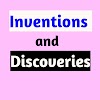1. Matter
Ans. The substances which we can see , touch and feel are called Matters.
2. Mass
Ans. The mass of a body is a measure of the quantity of in the body.
3. Density
Ans. The density if a substance is the mass per unit volume.
4. Volume
Ans. The space occupied by a body is called Volume.
5. Speed
Ans. The distance travelled by an object in an unit-time is called Speed.
6. Velocity
Ans. It is the distance travelled by an object in a given direction in an unit-time is called Velocity.
7. Force
Ans. A force is that which changes or tends to change the state of rest or motion of a body .
8. Weight
Ans. The weight of a body is the force with which the earth attracts the body towards itself.
9. Gravity
Ans. The force between the earth and an object is called the Gravity.
10. Force of Gravitation
Ans. The force between the two heavenly bodies id called Force of Gravitation.
11. Energy
Ans. The capacity of doing work of an object is called its energy.
12. Work
Ans. When an object is acted by a force and there is a displacement of that object in the same direction , then it is said that the work has been done.
13. Power
Ans. The work done in an unit-time is called Power.
14. Specific Gravity
Ans. It is the ratio of the weight of any volume of substance to the weight of an equal volume of water at 4 degree Celcius.
15. Heat
Ans. It is a form of energy that produces the sensation of warmth.
16. Light
Ans. It is a form of energy and also electromagnetic radiation that causes the sensation of vision.
17. Sound
Ans. It is a form of energy which is produced by vibrations.
18. Element
Ans. Element is the purest form of matter which can not be divided into two or more than two different substances which have different properties.
19. Mixture
Ans. It is formed with the mixing of two or more than two elements in indefinite ratio. By simple method its constituents can be separated.
20. Compound
Ans. A compound id formed by the chemical raction of two or more than two elements in a definite ratio . Its constituents can be separated by chemical method.
21. Liquification
Ans. The change of state from solid to liquid is called liquification.
22. Boiling Point
Ans. The temperature at which the liquid boils is called its Boiling point.
23. Physical Change
Ans. In this change , the state of a substance changes for a while but it regains its formal state again.
24. Chemical Change
Ans. In this change,the chemical properties changes permanently and it does not regain its formal state.
25. Acids
Ans. Acids are those substances which taste our sour and turn blue litmus paper into red.
26. Base
Ans. It is an oxide or hydroxide of a metal . Its taste is sour and turn red litmus paper into blue.
27. Sublimation
Ans. In this chemical action when a solid substance is heated , it directly converts into gas without converting into liquid and when it is cooled down , it is directly converted into solid without converting into liquid.
28. Catalysis
Ans. The substance which is responsible for the increase and decrease of the rate of a Chemical reaction is called catalyst and this phenomena is called Catalysis.
29. Oxidation
Ans. The combination of a substance with oxygen and removal of hydrogen from the substance is called Oxidation.
30. Reduction
Ans. The removal of oxygen from the substance and addition of hydrogen is called Reduction .
31. Atom
Ans. Smallest particle of an element which does not occur in free state but takes part in chemical reaction.
32. Molecule Ans. It is the smallest particle of an or compound which occurs in free state but does not take part in chemical reaction.
33. Ores
Ans. Ores are the substances from which metals are extracted .
34. Living things
Ans. The substances which has life , are known as Living things.
35. Non-living things
Ans. The substances which has no life , are called Non-living things.
36. Cell
Ans. Cell is the structural , functional and hereditary unit of life.
37. Tissue
Ans. A group of cells that work together to perform a specific function.
38. Liver
Ans. It is a gland of human body , which is situated at the right side above the abdomen.
39. Gall-bladder
Ans. It is situated at the bottom of the liver .It is pear shaped small bag which is called Gall-bladder.
40. Pancreas
Ans. It is both the ductless as well as ductfull gland whose one part is known as Islets of Langerhans . It secrets hormones named Insulin and Glucon.
41. Vein
Ans. Veins are the blood-vessels which carry the impure blood to the heart.
42. Artery
Ans. It carries the pure blood to the different parts of the body.
43. Blood-pressure
Ans. It is the pressure exerted by the blood for the proper blood-circulation . When the pressure is more or less than the normal, it causes the high or low blood-pressure respectively.
44. Haemoglobin
Ans. It is a red coloured pigment which exchanges oxygen and carbon dioxide in the blood.
45. Pencilin
Ans. It is an antibiotic medicine which kills bacteria.










0 Comments
If you have any problem , please let me know